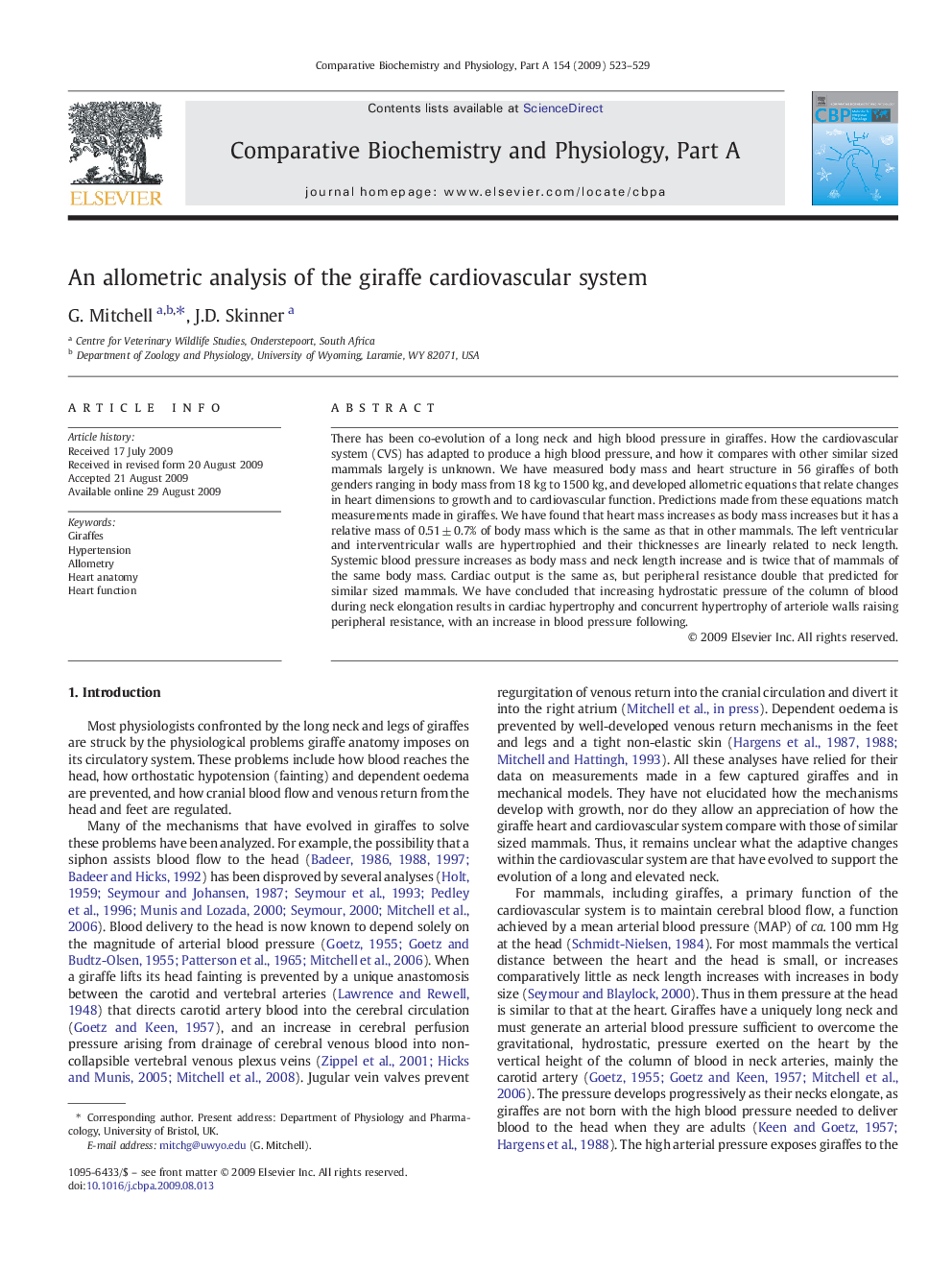| Article ID | Journal | Published Year | Pages | File Type |
|---|---|---|---|---|
| 1973184 | Comparative Biochemistry and Physiology Part A: Molecular & Integrative Physiology | 2009 | 7 Pages |
There has been co-evolution of a long neck and high blood pressure in giraffes. How the cardiovascular system (CVS) has adapted to produce a high blood pressure, and how it compares with other similar sized mammals largely is unknown. We have measured body mass and heart structure in 56 giraffes of both genders ranging in body mass from 18 kg to 1500 kg, and developed allometric equations that relate changes in heart dimensions to growth and to cardiovascular function. Predictions made from these equations match measurements made in giraffes. We have found that heart mass increases as body mass increases but it has a relative mass of 0.51 ± 0.7% of body mass which is the same as that in other mammals. The left ventricular and interventricular walls are hypertrophied and their thicknesses are linearly related to neck length. Systemic blood pressure increases as body mass and neck length increase and is twice that of mammals of the same body mass. Cardiac output is the same as, but peripheral resistance double that predicted for similar sized mammals. We have concluded that increasing hydrostatic pressure of the column of blood during neck elongation results in cardiac hypertrophy and concurrent hypertrophy of arteriole walls raising peripheral resistance, with an increase in blood pressure following.
